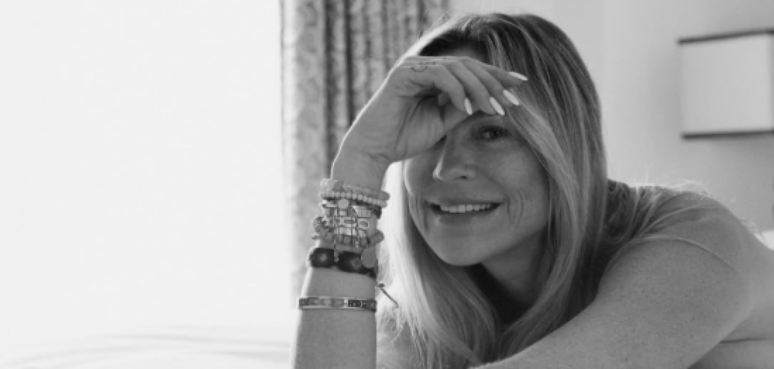With the drama ‘The Whale’, starring Brendan Fraser, the filmmaker returns to influence religious symbolism and the theme of darkness in human nature.
When Darren Aronofsky competed at the 2017 Venice Film Festival, in anticipation of the wildest criticism of ‘mother!’, an allegorical story about planetary devastation driven by biblical images, chose to publish a statement by way of declaration of intent. In addition to explaining and introducing her themes before anyone had a chance to see her, in the text she mentioned a lesson learned from Hubert Selby, Jr., the author of the novel on which ‘Requiem for a Dream’ (2000) was based: “When we look into the darkest parts of ourselves, we find the light”.
The reflection is easily assignable to any of the New York filmmaker’s titles. AND his latest work, ‘La ballena’, is no exception. With a greater commitment to melodrama than to the psychological intrigue that has characterized the bulk of his filmography, The central character of this film, played by Brendan Fraser, is a morbidly obese man who is determined to see light where everyone else sees doom. His ex-wife is convinced that their daughter in common embodies pure evil. A young evangelist periodically goes to her house to alert her of the end of the world. And the news on television, which contextualizes the story in 2016, suggests that the far-right tycoon Donald Trump will be the Republican candidate for the White House.
aronofsky has adapted, on this occasion, a script by playwright Samuel D. Hunter, although someone else’s authorship of the script doesn’t mean much when talking about a director with such a defined style and such clear thematic recurrences; ‘El luchador’ (2008) or ‘Cisne negro’ (2010), both also with texts by other writers, allow us to easily corroborate this. Almost ignored by the Academy —although Fraser is the big favorite among the nominees for Best Leading Actor at the Oscars 2023—, ‘The whale’, of course, has also been received with a wide division of opinions, to comply with another constant in the filmmaker’s career.
At the heart of the debate, the debatable way in which Aronofsky uses the body of the main character and puts it at the service of tragedy, approach that some have considered fatphobe For example, the journalist David Sims, in The Atlantic, defined the film as “a spectacle of misery that shows its protagonist as a zoo animal”. “Aronofsky is obsessed with Charlie [nombre del personaje] in all the wrong ways, presenting it as a traveling house of horrors,” he writes. “That exhibitionist gaze clashes awkwardly with the supposed humanism of the story”.
From art to body horror
The physical form of the protagonist of ‘The whale’ responds to the personal abandonment to which he gives himself after the loss of his sentimental partner, a duel that, in a certain way, acquires materiality with it. Regular viewers of Aronofsky are all too familiar with the idea of bodily transformation as part of the development of a conflict, with the particularity, however, that Charlie is already in that state from the beginning of the film. In the diptych formed by ‘The fighter’ and ‘Black Swan’, that they were originally going to make up the same movie (the extreme love story between a wrestling professional and a dancer), the long-suffering artists at the center of both stories make a profound sacrifice to live up to their demanding discipline.

In the 2010 film starring Natalie Portman, exploration leads, at times, to body horror or body horrora horror subgenre dedicated to aberrant physical alterations: we see the dancer mutate into the bird she has to represent on stage, experience the growth of feathers on her back similar to Jeff Goldblum’s spikes in ‘The Fly’ (1986) or harm herself. aronofsky uses references to totems such as Dario Argento, Roman Polanski or Brian de Palma to chronicle the journey to hell of a teenager suffocated by her status as a model daughter, under the control of an oppressive mother who even watches over her sleep. But that dark flight is liberating, to reaffirm once again the search for the light that guides Aronofsky’s narratives.
“Death is the path to reverence” is the quote from ‘The source of life’ (2006) in which Chris Cabin relied to speak on Collider of the influence of body horror in the director’s cinema, even in works apparently far from those codes. “Close-ups of gushing blood, gaping wounds, burns and irritated skin abound in almost all of Aronofsky’s films. Even in his most openly spiritual works, such as ‘Noah’ (2014) or ‘La fuente de la vida’, the mission of the soul is surrounded by the fragility of the flesh, the bones and the brain”, think. From the drill in Max’s head in ‘Pi, faith in chaos’ (1998) in his neurotic conquest of supreme knowledge to the exploitation of nature by a narcissistic poet in ‘mother!’, the American filmmaker’s stories have always to do with souls pressing the limits of their carcasses until purging them.

In ‘The Whale’, Charlie has reached a point of no return for his health, but this seems to be a secondary problem according to the real anxiety that concerns him, which is his need, as a professor of literature, that the students he teaches on-line write something honest Specifically, he lives obsessed with a wording of ‘Moby Dick’ —whose authorship, initially, is not revealed— that offers the key to the film’s title and a way of interpretation outside the plot: the person who wrote it maintains that Herman Melville’s book uses the figure of the great white whale that Captain Ahab pursues as a distraction to cover up the sadness true of history
It is not too difficult to extrapolate the suggestion to the film itself, where the supposedly scandalous body of the character (with the complicity, why deny it, of Aronofsky in his taste for provocation) It can, in turn, serve as a clue when it comes to ascertaining what the real drama is.
The lie does not let you see the forest
Few horror orthodox would probably recognize Aronofsky as a director attached to the genre, but rather as someone who punctually uses its mechanisms to underpin the intensity of the dramas he produces. In fact, the teacher john carpenter (who has, however, acknowledged Aronofsky as “a talented director”) came to express in one of his famous and linguist interviews the suspicion that the New Yorker “secretly hates horror movies”, within a bilious string where he railed against the “artist” aura of Cronenberg in recent years, against Eli Roth and against “the geniuses”.

The alliance, in this sense, of Darren Aronofsky with a production company like A24, whose horror films are frequently attacked by a sector of fans who think that the label does not believe in the expressive possibilities of the genre and uses it as an aesthetic excuse, I would make ‘The Whale’ a marriage made in heaven, if it weren’t for the fact that, here, terror is the opposite of a narrative vehicle. Almost agreeing with Carpenter, the objective of the story (and of the protagonist) has to do with the contestation of terror, a brake on the progression of his paralyzed characters.
What the filmmaker and Samuel D. Hunter, with the admittedly few subtle inserts of political news, seem to propose is that the only fearsome thing is lying and that even cruelty deserves to be re-evaluated if it has an honest background. In ‘The Whale’, what is scary is false, obscene, based on prejudice and represents a distraction from the truth: from Trump’s calculatedly outrageous statements to the giant, greasy, sweaty body of Brendan Fraser’s character, everything, like the whale from ‘Moby Dick’ writing, is an obstacle. whose only existential justification is to hide a transcendent reality, with the truth as the exclusive antidote.

A surprisingly positive turn to the narratives of Aronofsky, whose personal search for “light in the dark” seems to lie in the inquiry into its contradictions: from hopeless terror with a message to hopeful drama against terror, from the embrace of the negative ‘me’ to the meeting of the kind otherness, of atheism to the evangelizing power of elevated certainties. And with the sacrifices that are necessary in between, so as not to mislead those who saw what ‘mother!’ really means. a reading about the artistic exploitation of the foreign body by an abusive artist.
Source: Fotogramas
Rose James is a Gossipify movie and series reviewer known for her in-depth analysis and unique perspective on the latest releases. With a background in film studies, she provides engaging and informative reviews, and keeps readers up to date with industry trends and emerging talents.







